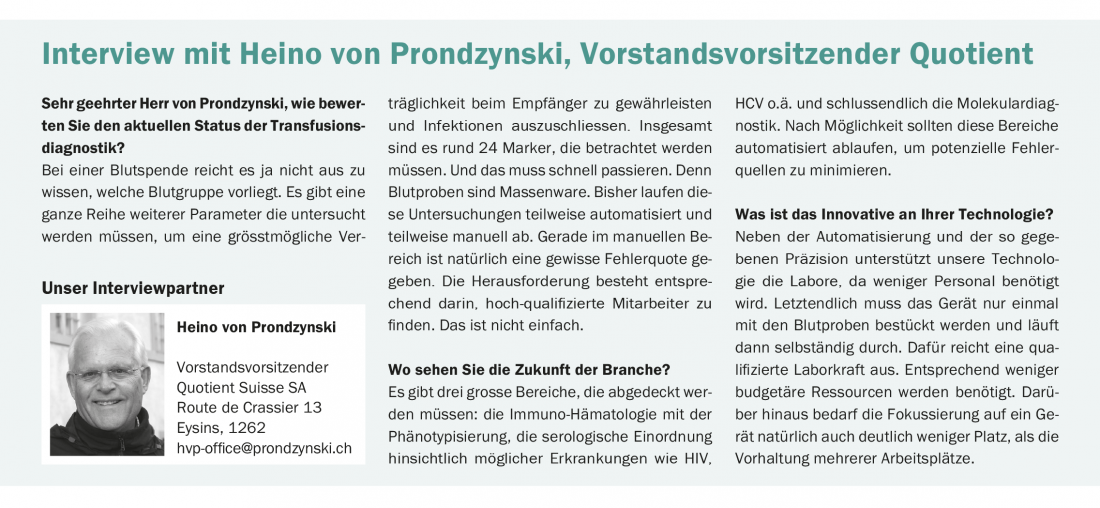Transfusion diagnostics are critical to survival. Without assured compatibility and tolerance, no blood donation would save lives. But trend forecasts fear increasing consumption with a simultaneous reduction in potential blood donors. In addition, the increasingly complex analyses make handling more difficult and cause costs to skyrocket. An effective solution is needed.
The population is getting older, the world more and more global. This is nothing new and comes as no surprise. What is a little surprising, however, is the fact that against this background, innovations in transfusion technology are lacking. This is because the older people get, the more likely they are to need not just one, but several transfusions. However, this also increases the likelihood of immunization. Globalization also means that donor blood and recipients have different genetic backgrounds. Complex analysis is therefore required to ensure that patients do not react to foreign substances in the donor blood.
Laboratories process between 5,000 and 10,000 donor samples daily. The various tests are diverse and range from blood grouping to molecular and serological disease screening. Due to the longevity of the equipment, these analyses are performed with devices that are sometimes ten or even twenty years old. Can they cope with the increasing challenges? Without exception, blood components must be manufactured without defects and must therefore meet an increasing number of requirements. Errors cannot be tolerated. This could be life-threatening for the recipient.
Multi-level tasks require expert personnel
But the challenges are currently just as high as potential sources of error. This is due to the multi-stage, cross-machine workflows. Different machines and technologies are needed to perform different tests. In addition, many operating systems from different manufacturers are not compatible. This entails a great deal of work for the specialist staff. After all, the work processes must be adhered to, and quality must be ensured. And in the end, the different results have to be combined in a laboratory information system. No easy task.

First fully automated and consolidated test platform
With the world’s first fully automated and consolidated testing platform for both blood grouping (for patients and donors) and screening of blood donations for transfusion-related infections, challenges could be minimized in the future. The new technology enables rapid diagnosis of blood, serum or plasma samples obtained by venous blood sampling. Each unit can process 1000 tests per 8-hour shift or 3000 per day. Initial test results are available in just 35 minutes, with each subsequent test taking 24 seconds. MosaiQ™ uses a special mixture of traditional serology and advanced microarray technology. The MosaiQ™ instrument is CE marked and the microarray manufacturing facility is ISO 13485 certified. In addition, five microarrays are already CE certified.
As part of the global effort to combat COVID-19, Quotient has launched the first antibody test produced in Switzerland. According to performance data, the MosaiQ™ COVID-19 antibody microarray test shows exceptional results: 100% sensitivity and 99.84% specificity, achieving the earliest possible detection of antibodies. Currently, certification of the microarray for expanded serological disease screening is pending. At the beginning of March 2022, the first commercial transfusion diagnostic combination of Initial Serological Disease Screening and Expanded Immunohematology Microarray was CE-marked and launched in Switzerland.
InFo ONCOLOGY & HEMATOLOGY 2022; 10(3): 35.
CARDIOVASC 2022; 21(2): 39











